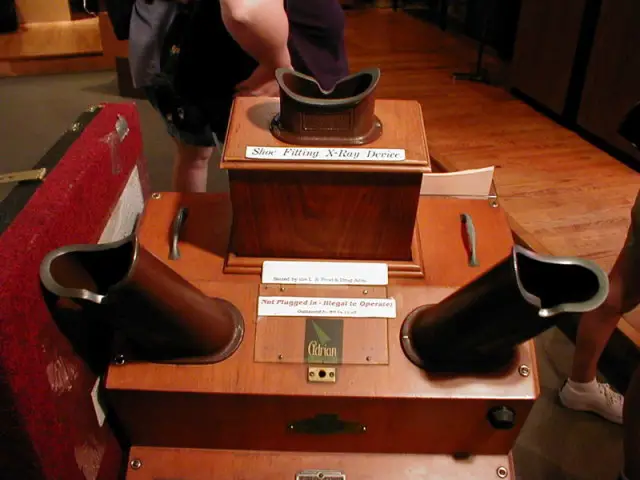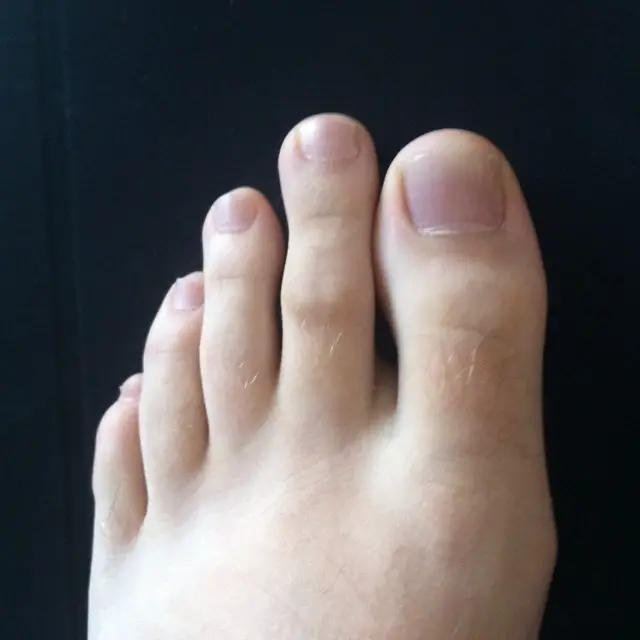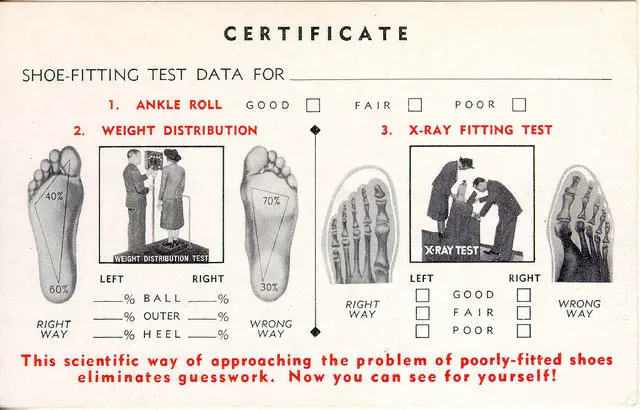Jonathan Dodd’s latest column. Guest opinion articles do not necessarily reflect the views of the publication. Ed
We humans have a strange capacity to react only in extremes to new technology. We either become terrified of awful results of using new things, or we throw all caution to the winds and embrace the new thing with complete abandon.
Neither attitude bears any relation to the genuine risks, of course. Very often these risks are completely unknown until too late, or they’re toned down for commercial reasons, or they’re completely made-up, so it becomes difficult to separate out actual fact from scare-mongering or marketing fluff.
Looking forward to going to shoe shops
It doesn’t make any difference either whether these new things are actually useful or not. We just take it into our minds to embrace or rebut new things according to the same sort of ebb and flow that dictates fashion.

I remember really looking forward to going to shoe shops when I was young. It wasn’t because I loved buying shoes, or because the shoes were exotic or well-designed. All I ever got was sensible shoes for school, sandals in summer, sensible slippers for bedtime, and gym shoes for sports. And Wellington Boots for rain, and football boots (or rugger boots) for the more manly pursuits of whatever school I was attending.
Such was the mindset in those days
None of these were very exciting. But the shoe shop was, because of the strange machine back there in the corner. Otherwise shop-shy youngsters used to queue up to poke their feet in the hole at the bottom, place their eyes on the rubber viewing-tube, and watch their toes wiggling, bathed in that weird and magical black-and-grey tinged x-ray glow.

I think it was probably well-known by then that too much exposure to x-rays was harmful, but they were there in shops, so they must be all right. Such was the mindset in those days. Eventually someone checked the statistics, and all the magic x-ray machines were scrapped overnight. I missed them.
Not fit for purpose anyway
The interesting thing was that these x-ray machines that could see whether your feet fitted your shoes comfortably were actually not fit for purpose anyway. You could only see your bones. The flesh of your feet, squeezed in or loose inside, was invisible. But nobody cared. It was seen as a very modern device for checking shoe sizes, and your children trooped happily to buy shoes. Job done.

Perhaps the shoe industry had to start making shoes the were attractive and desirable instead in order to attract customers and sales, so it was a good thing all round. My mother was always careful to buy me shoes that were properly fitted, and always bought the best. But I still ended up with little toes that are triangular in section because they were squeezed into shoes that were long enough but too narrow.
Microwaves frying your brains
I remember the fuss that some people made when mobile phones were first sold, about all those microwaves pouring into your heads and frying your brains. We still don’t know whether there are any long-term effects, but it doesn’t stop us spending inordinate amounts of time staring at the things and walking around with them clamped to our heads. That’s because, of all the things we’ve invented in the last few years, we love our mobiles the most.

I suspect we’d carry on using our phones even if they were found to be dangerous. Imagine the furore if the government tried to ban mobile phones now because of adverse health issues. We wouldn’t care.
Sunglasses because of the glare
Everyone must have seen pictures of soldiers being invited to watch early atom bomb explosions, advised to wear sunglasses because of the glare. After asbestos was discovered, it was used everywhere as a fire-retardant building material, until the long-term effects became clear. I remember seeing firemen in asbestos suits, walking through fires.

This isn’t new. Back in the 1820s, Parliament earnestly discussed the dangers of the new-fangled steam trains, many believing that the human frame couldn’t survive going faster than 25mph. And they were so worried about cars that the first horseless carriages had to have a man walking in front of them waving a red flag.
The fashion for smoking tobacco
Before that, Sir Walter Raleigh brought the extraordinary tobacco plant back from the New World to present to the first Queen Elizabeth, instigating not only the fashion for smoking tobacco in all its forms, but the slave trade to provide the labour for its cultivation. Nobody seemed to question whether it was good for you or not for three or four centuries.

Now, of course, we know how expensive tobacco is in terms of palliative care and human suffering. We’re struggling with our inability to work out what we should do to wean people off it, and we’ve now got substitutes that may or may not be better than the original substance. We look at alcohol in the same way, and fret about whether we should legalise other substances that could be less harmful. It’s all a mess.
We can’t eliminate the unseen consequences
The truth is that there’s always risk in life. Those poor women who were subscribed Thalidomide for morning sickness had no idea how horrendous the results would be. And nor did their doctors. We must progress, but we can’t eliminate the unseen consequences.

What we can do is to be honest in our endeavours to research possible bad outcomes before allowing them to be bought and used, and to punish those who fail to research or falsify results. We still have lots of very good people working on our behalf checking the safety of new products, although whether they’ll still be in place in a few years is a question I worry about.
Until it’s too late to roll it back
And above and beyond that, there’s a thin line between protecting the population from dangerous substances, bad food and unsafe products, and making that protection go just a little farther, to limit the freedom of individuals and increase the power of the state. This can be extreme and disturbing, as in Pakistan and Afghanistan, two of the only countries where polio still exists, where the Taliban shoot inoculating nurses, or schoolgirls. It can also be insidious, as in state control of news services or limits on Internet availability and use.

As always, we face every day with new challenges and new products, which can either make our lives a heaven or a hell, or at least minor variations of either. We’ll love some and fear others, and we’re never going to know what their effect on us and our lives is until it’s too late to roll it back.
Who knows what’s going to happen?
What a glorious mess our lives are! Thank goodness there are never clear-cut answers or unarguable reasons either way for any of it. In the USA they elect an intelligent and moral black man, and now they’re seriously thinking about voting for the complete opposite. And we, who have lived in peace and community with our neighbours for decades, after centuries of war, are being given the chance to vote to leave. Who knows what’s going to happen? I certainly don’t.
What do I think? This is what I think. Whatever will be will be, the future’s not ours to see.

Que sera, sera.
If you have been, thank you for reading this.
Image: golanlevin under CC BY 2.0
Image: Alansplodge under CC BY 2.0
Image: Andrew Kuchling under CC BY 2.0
Image: Jrockets under CC BY 2.0
Image: _nezemnaya_ under CC BY 2.0
Image: Manuel F. Guerrero, U.S. Marine Corps under CC BY 2.0
Image: Frederick William Fairholt under CC BY 2.0
Image: James Gillray – public domain under CC BY 2.0
Image: Enrique Jiménez under CC BY 2.0
Image: flickr4jazz under CC BY 2.0





